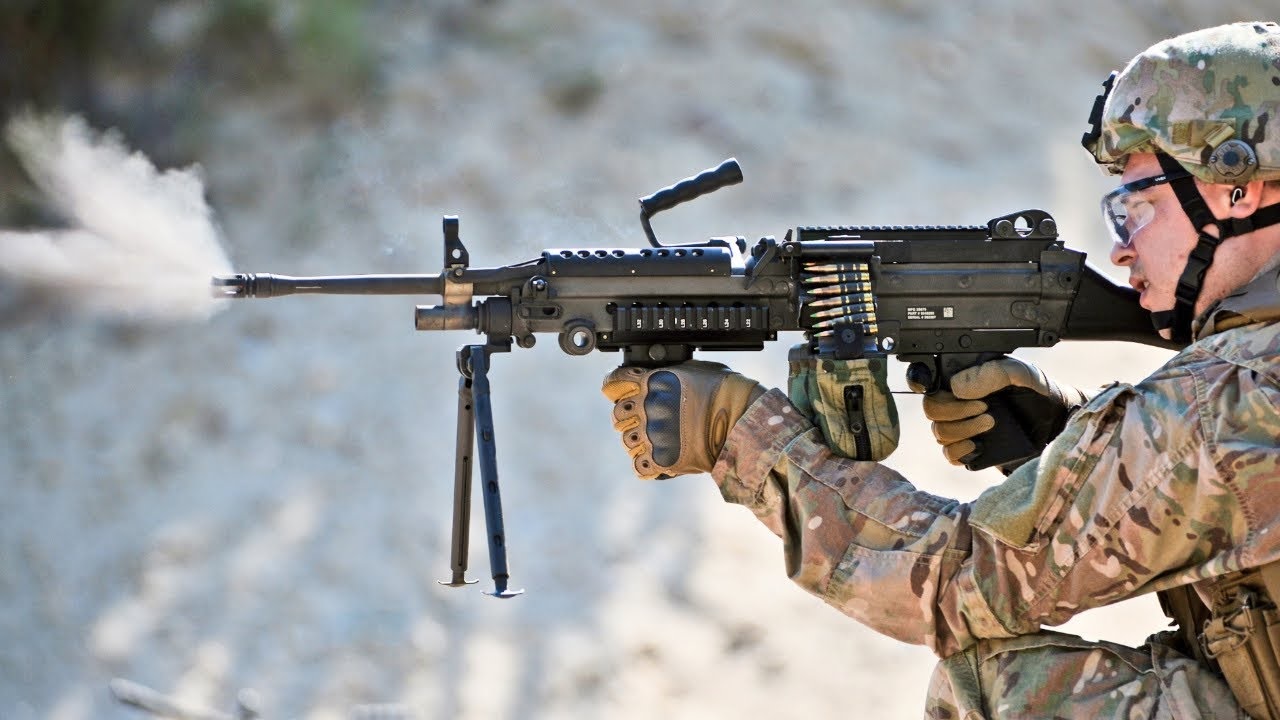Meet the M249 Squad Automatic Weapon (SAW). Not one of the more fondly remembered weapons in my military experience, mind you, but an important one nonetheless. And the gun has remained in service for nearly 40 years, so I suppose it must’ve been doing something right in that timeframe.
Let’s take a look at the good, the bad, and the ugly of the SAW.
(Subscribe to 19FortyFive‘s New YouTube Channel here.)
SAW Startup & Specifications
The M249 SAW – “(also known as the FN MINIMI),” according to the manufacturer’s official website – formally written as “Light Machine Gun (LMG), 5.56 mm, M249” – is manufactured by Fabrique Nationale (FN) Herstal of Belgium.
It is an individually portable, gas-operated, air-cooled magazine or disintegrating metallic link-belt fed, LMG with fixed headspace and quick change barrel feature. It was initially designed in 1976 and officially adopted by the U.S. Armed Forces in 1984.
The premise and reasoning behind the design and adoption of the SAW is described in detail by a Military.Com info page:
“The SAW was developed through an initially Army-led research and development effort and eventually a Joint NDO program in the late 1970s/early 1980s to restore sustained and accurate automatic weapons fire to the fire team and squad. When actually fielded in the mid-1980s, the SAW was issued as a one-for-one replacement for the designated ‘automatic rifle’ (M16A1) in the Fire Team … In this regard, the SAW filled the void created by the retirement of the Browning Automatic Rifle (BAR) during the 1950s because interim automatic weapons (e.g. M-14E2/M16A1) had failed as viable ‘base of fire’ weapons.”
As to the question of why not simply stick with the M60 AKA “The Pig” for this purpose, it was considered more of a general purpose machine gun (GPMG), very heavy and usually requiring a crew of two in order to operate efficiently (its single-man usage by movie heroes like John Rambo and Full Metal Jacket’s Animal Mother notwithstanding).
The end result was a 5.56x45mm LMG that weights 18 lbs, with a total length of 40.74 inches and a barrel length of 18 inches. The cyclic rate of fire is 800 rpm, with a maximum range of 3,600 meters and a maximum effective range against point targets at 800 meters.
The gun saw its first major combat usage in 1989 during Operation Just Cause in Panama, followed by Operation Desert Storm, the Global War on Terror (GWOT), and so forth.
The SAW is now in the twilight of its career: in 2009, the U. S. Marine Corps selected the M27 Infantry Automatic Rifle, to partially replace the M249 in USMC; earlier this year, the U.S. Army selected the Sig Sauer XM250 as the SAW’s replacement.
Personal Shooting Impressions
As indicated in the opening paragraph, my experience with the SAW was garnered during my Air Force Security Forces days. More specifically, the enlisted USAF Security Forces Apprentice technical training course gave me my initial introduction to the gun. Though I’d fired fully automatic weapons – as in submachine guns – before, this was my first time working with a true belt-fed machine gun. Shooting it was fun. That was the only positive in my book
I found disassembly and especially reassembly to be an absolute bleepity-blanking nightmare! I’d thought the M16 was bad enough in having too many small parts to contend with, but the M249 was exponentially worse for me. Especially non-user-friendly in my book were the gas collar and cylinder tube; the struggle to get those damn things to pop back into place during reassembly nearly caused me to fail my timed Progress Check (PC)!
Luckily I did pass that particular PC by the skin of my derriere and went on to be the Top Graduate of my tech school class. During the remainder of my 7-year active-duty career, I only had to deal with the M249 one more time, that being during the Security Forces Officer Course in 2004.
To this day I’m thankful that it never became my officially assigned duty weapon.
MORE: Ukraine Needs M1 Abrams Tanks Now (But Will Have to Wait)
MORE: Joe Biden Won’t Send F-16 Fighters to Ukraine
MORE: Why Putin Should Fear the F-16 Fighter
MORE: Why Donald Trump Can’t Win in 2024
A Colleague’s Impressions
Evidently, I’m not the only military veteran with a less-than-sterling impression of the SAW. Here’s what my old Iraq contracting and Cigar Club comrade Jay W. (he requested anonymity on his complete surname), a retired Army MP and Arms Room NCOIC, has to say about it:
“Bro, I hated that gun. The feed pawls, feed pawl springs, extractors, mag feed, and sometimes the charging handle would fail. And I won’t even mention the propensity to double-feed. F***. That. Gun.”
As Eric Idle said to his Monty Python crewmate Terry Jones in one particularly memorable sketch, “Say no more!”
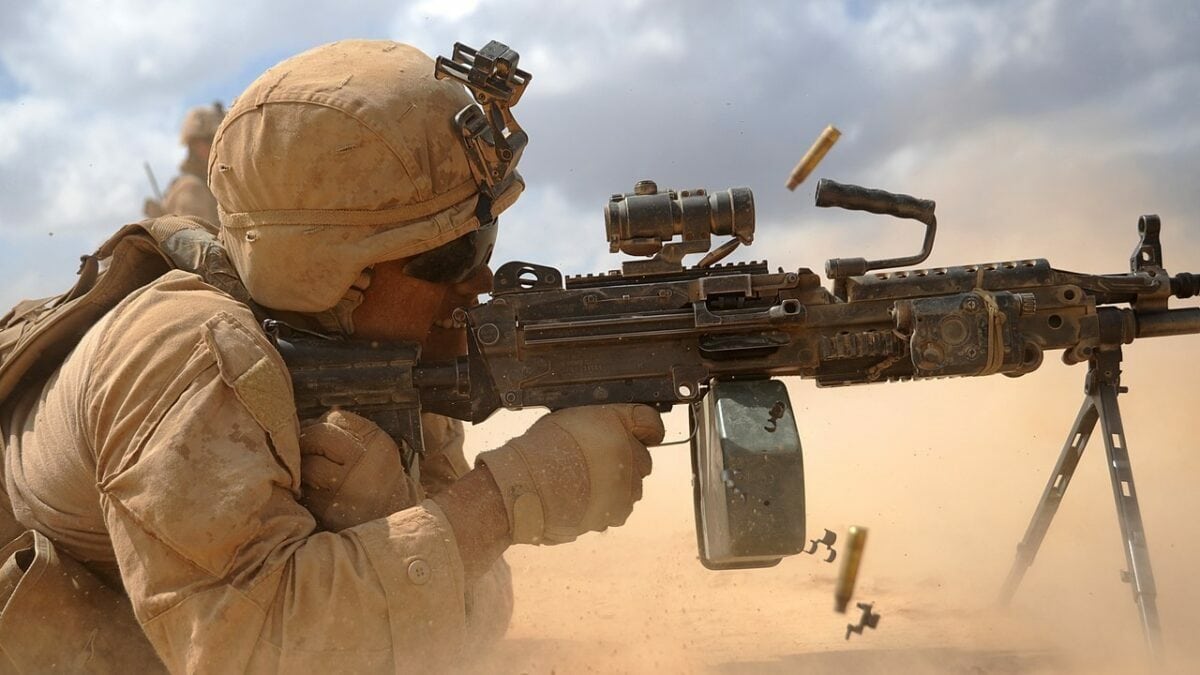
Lance Cpl. Luther Sackett, a rifleman from Rockyford, Co., engages targets during a live-fire and maneuver exercise here Jan. 29. Sackett, and other Marines with Light Armored Reconnaissance Platoon, Weapons Company, Battalion Landing Team 2/4, 11th Marine Expeditionary Unit, conducted live-fire weapons shoots and trained with the French Army Jan. 28-Feb. 5.
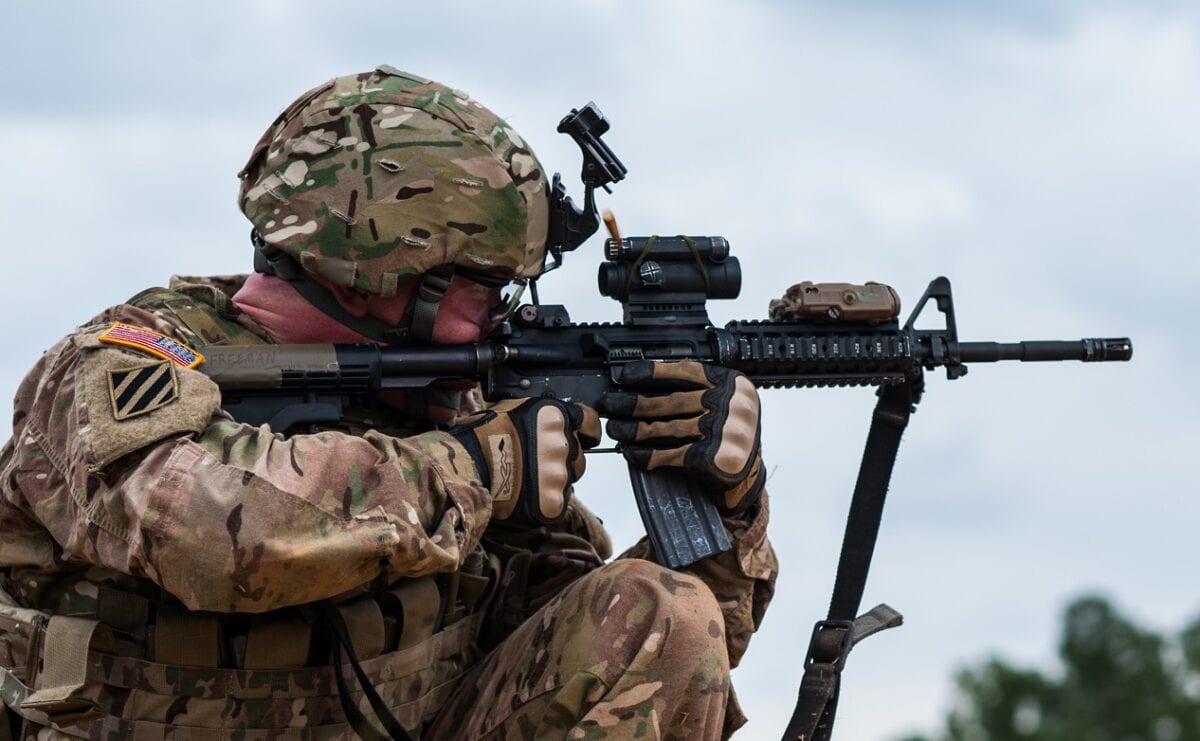
Capt. Kirk Freeman with the 98th Training Division and a member of the U.S. Army Reserve Marksmanship Team, qualifies with his M4 rifle during the first day of the U.S. Army Forces Command Weapons Marksmanship Competition Sept. 21, 2015, at Fort Bragg, N.C. The three-day FORSCOM competition features 27 marksmen from the U.S. Army, U.S. Army Reserve, and the National Guard in events for the M9 pistol, the M4A1 rifle, and the M249 SAW, or Squad Automatic Weapon, to recognize Soldiers who are beyond expert marksmen. The multi-tiered events challenge the competitors’ ability to accurately and quickly engage targets in a variety of conditions and environments. (U.S. Army photo by Timothy L. Hale/Released)
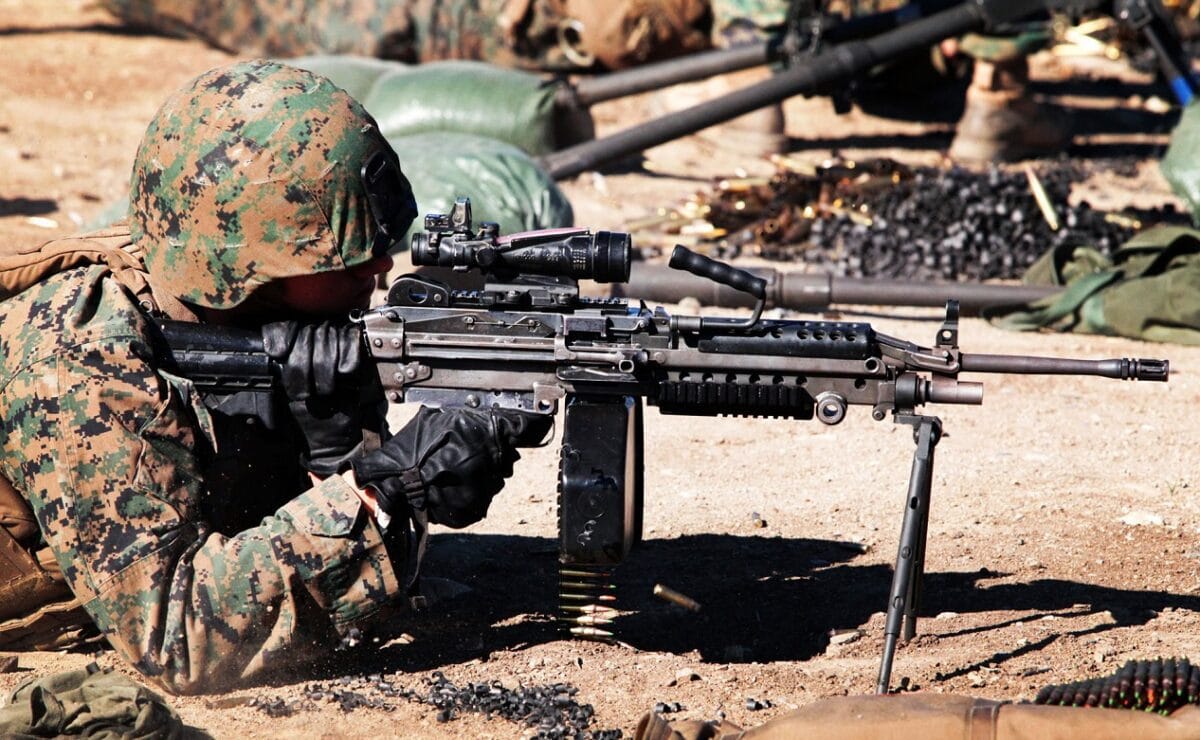
Lance Cpl. Daniel Vitellaro with 1st Combat Engineer Battalion, fires an M249 light machine gun during a two-week machine gunners course at Marine Corps Base Camp Pendleton, Calif., Jan. 15. The course taught Marines how to effectively operate machine guns in combat scenarios.
(U.S. Marine Corps photo by Lance Cpl. Joshua Murray/Released)
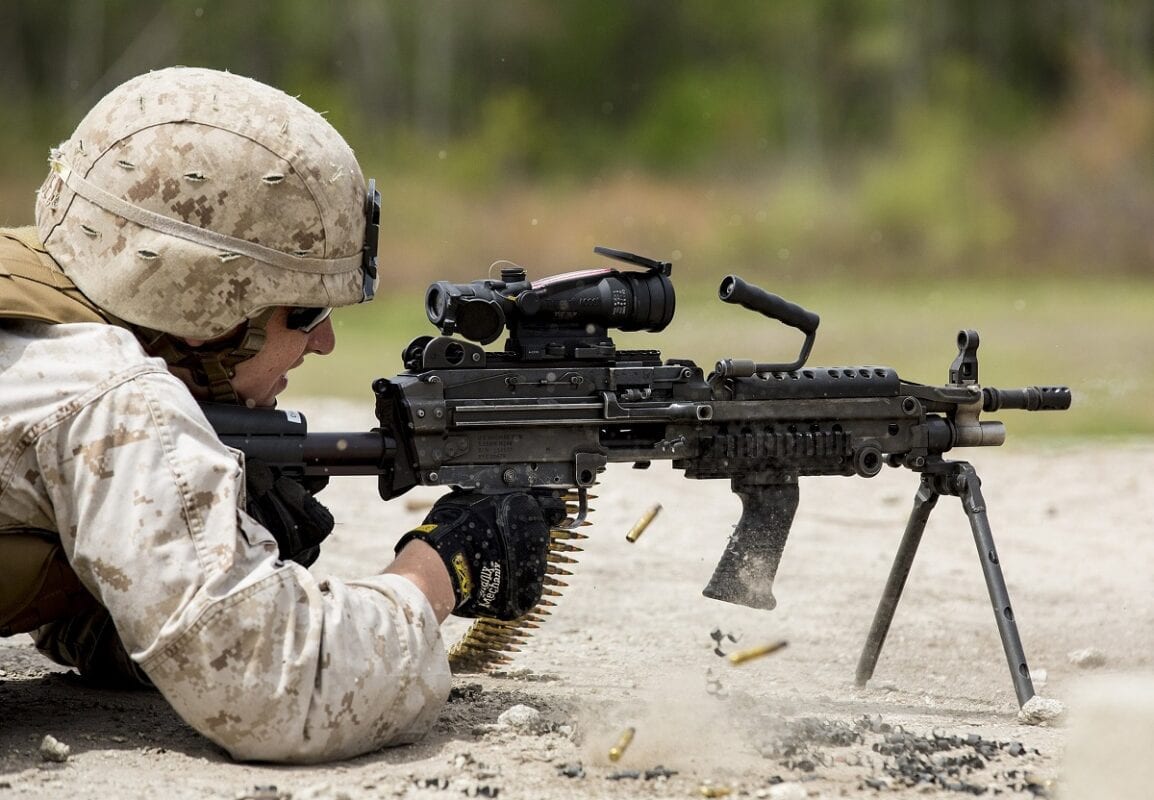
Image: Creative Commons.
Christian D. Orr has 33 years of shooting experience, starting at the tender age of 14. His marksmanship accomplishments include: the Air Force Small Arms Ribbon w/one device (for M16A2 rifle and M9 pistol); Pistol Expert Ratings from U.S. Customs & Border Protection (CBP), Immigration & Customs Enforcement (ICE), and the Federal Law Enforcement Training Center (FLETC) Criminal Investigator Training Program (CITP); multiple medals and trophies via the Glock Sport Shooting Foundation (GSSF) and the Nevada Police & Fires Games (NPAF). Chris has been an NRA Certified Basic Pistol Instructor since 2011. In his spare time, he enjoys (besides shooting, obviously) dining out, cigars, Irish and British pubs, travel, USC Trojans college football, and Washington DC professional sports.

